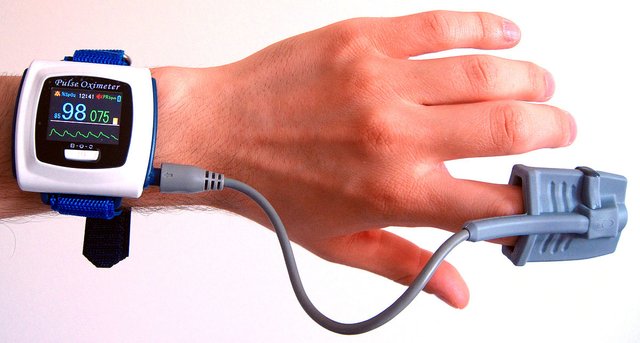
Heartbeat oximetry is a noninvasive strategy for observing a man's oxygen immersion (SO2). In spite of the fact that its perusing of SpO2 (fringe oxygen immersion) isn't generally indistinguishable to the more attractive perusing of SaO2 (blood vessel oxygen immersion) from blood vessel blood gas examination, the two are related all around ok that the sheltered, advantageous, noninvasive, reasonable heartbeat oximetry technique is significant for estimating oxygen immersion in clinical utilize.
A heartbeat oximeter is a medicinal gadget that by implication screens the oxygen immersion of a patient's blood (rather than estimating oxygen immersion specifically through a blood test) and changes in blood volume in the skin, creating a photoplethysmogram. The beat oximeter might be consolidated into a multiparameter tolerant screen. Most screens additionally show the beat rate. Convenient, battery-worked beat oximeters are additionally accessible for transport or home blood-oxygen observing.
Heartbeat oximetry is especially helpful for noninvasive consistent estimation of blood oxygen immersion. Interestingly, blood gas levels should generally be resolved in a research facility on a drawn blood test. Heartbeat oximetry is helpful in any setting where a patient's oxygenation is insecure, including concentrated care, working, recuperation, crisis and healing center ward settings, pilots in unpressurized flying machine, for evaluation of any patient's oxygenation, and deciding the adequacy of or requirement for supplemental oxygen. In spite of the fact that a heartbeat oximeter is utilized to screen oxygenation, it can't decide the digestion of oxygen, or the measure of oxygen being utilized by a patient. For this reason, it is important to likewise quantify carbon dioxide (CO2) levels. It is conceivable that it can likewise be utilized to distinguish irregularities in ventilation. In any case, the utilization of a heartbeat oximeter to distinguish hypoventilation is disabled with the utilization of supplemental oxygen, as it is just when patients inhale room air that variations from the norm in respiratory capacity can be recognized dependably with its utilization. In this manner, the normal organization of supplemental oxygen might be ridiculous if the patient can keep up sufficient oxygenation in room air, since it can bring about hypoventilation going undetected.